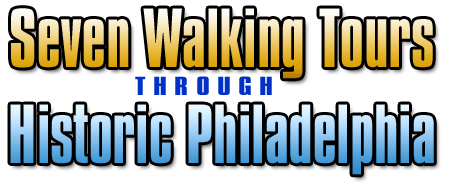Laurel Hill Cemetery


Abutting Fairmount Park at this point, and a geographical extension of it, is Laurel Hill Cemetery, whose tombstones, monuments and mausoleums can be seen from Kelly Drive. A walk along its paths will enable us to see a vanishing piece of America — the Gothic, cluttered cemetery which is fast disappearing.
Planned as early as 1835, and Laid out by John Notman, the site was once the country seat of Joseph Sims, called "Laurel."
Laurel Hill is truly a necropolis, a city of the dead, yet is situated in one of the most romantic spots in Philadelphia, overlooking Kelly Drive and the Schuylkill. There is a brooding air about it, probably caused by the crowded stones — it appears to be nearly filled — and its situation of almost hanging over the river. The monuments are distinctive at best, each one meant to outdo its neighbor in originality. In the last century Laurel Hill Cemetery was a place to promenade on a Sunday afternoon or a holiday. Strollers found it a favorite place for a ramble. Today strollers are the exception.
When the cemetery was opened, Charles Thomson, the secretary of the Continental Congress, had been resting quietly for 14 years in a cemetery at Harriton. The story is told that the promoters of Laurel Hill approached his heirs and asked to remove this distinguished American's body and his wife's to the new cemetery. The heirs, except for one nephew, refused. Soon after the refusal, grave robbers at Harriton were surprised at their task and threw the bodies they were robbing in a cart and beat a hasty retreat. These unfortunate bones were reinterred in Laurel Hill and a splendid monument to Thomson was erected over them. There is disagreement as to whether the bodies were those of Thomson and his wife, but the bones have remained undisturbed since under a handsome obelisk.
Laurel Hill is a treat for cemetery aficionados and history lovers alike. Here funeary art and history form a singular confluence. From the 18th century we find Thomas Godfrey, who invented the mariner's quadrant, Thomas McKean (1734-1817), Signer of the Declaration of Independence, and our old friend David Rittenhouse, for whom Rittenhouse Square is named.
In house-sized mausoleums lie the Philadelphians who made the 19th-century city the "workshop of America," such industrialists as saw magnate Henry Disston and locomotive powerhouse, Matthais Baldwin. Here, too, you will find John Francis Marion, inspiration and author of this much of this tour, at rest in a grave overlooking the Schuylkill River. His peripatitions done, Marion has kindly left a bench aside his tombstone for the foot-weary walker to rest on before continuing his own "historic walks".
The next stop on the tour, the Philadelphia Zoo, is a fair distance away and you have to cross the Schuylkill River to get there. Head south on Ridge avenue for a little more than a mile until you come to Girard and take it west, across the bridge.
Fairmount Park
- Welcome to Fairmount Park
- Joan of Ark
- Fountain of the Sea Horses
- John Paul Jones
- Waterworks
- Lincoln Monument
- Lemon Hill
- Boathouse Row
- Icelandic Sculpture
- Garfield by Saint-Gaudens
- Samuel Memorial
- Playing Angels statue
- Grant Statue
- Mount Pleasant
- Remington's Cowboy
- Smith Playground
- Woodford
- Strawberry Mansion
- Laurel Hill Cemetery
- Zoo
- Sweetbriar
- Cedar Grove
- Memorial Hall
- Smith Civil War Memorial
- Japanese House (Shofuso)


